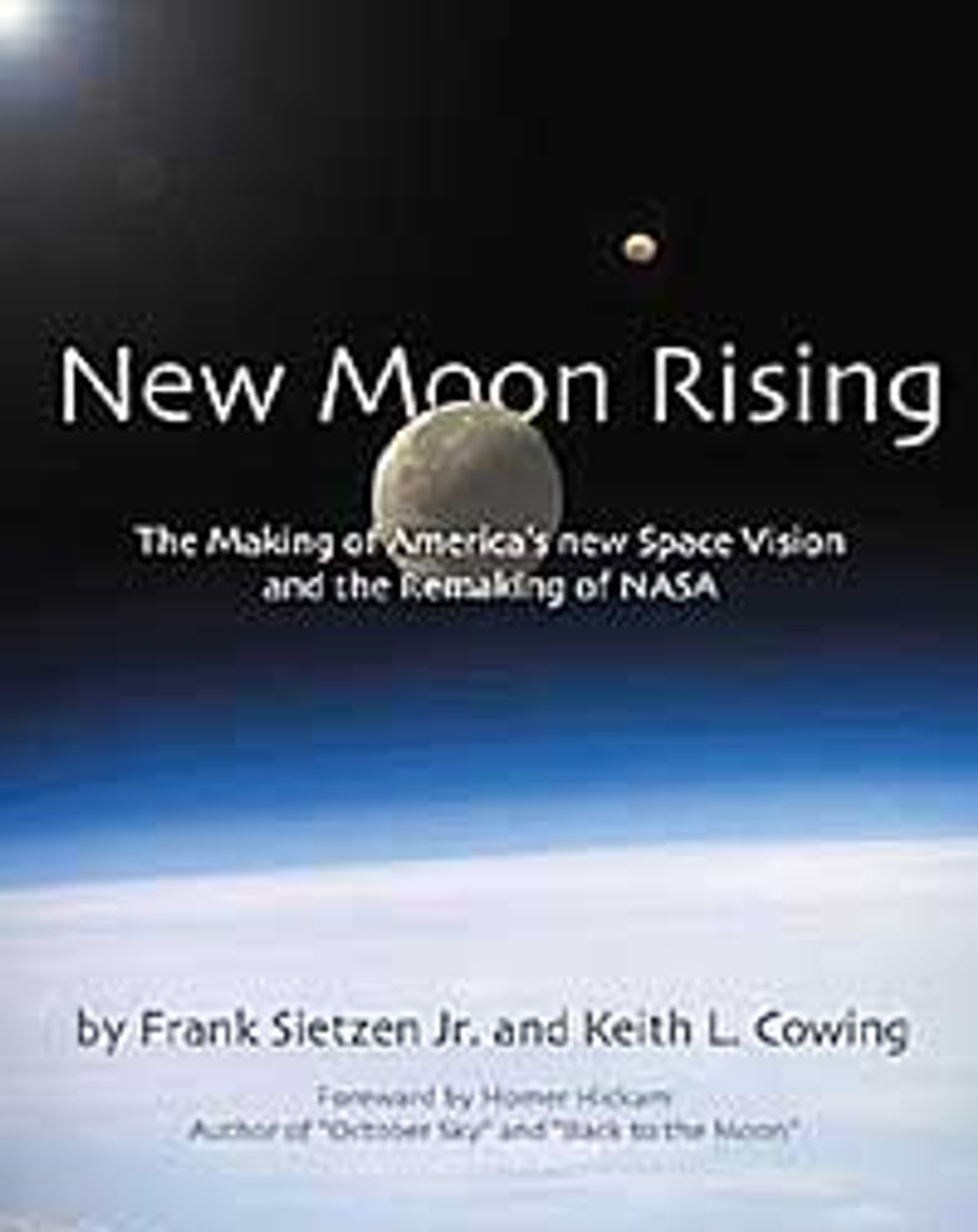Reviewed by Stephen Cass
New Moon Rising: The Making of America's New Space Vision and the Remaking of NASA: By Frank Sietzen Jr. & Keith L. Cowing; Apogee Books, Burlington, Ont., Canada; 280 pp., US $34; ISBN 1-8949-5912-4
In January 2004, U.S. President George W. Bush announced an ambitious program of human space exploration, a bid to reverse NASA's 30 years of slow decay since the halcyon era of the Apollo moon landings. Last November, the President's plan finally moved beyond colorful budget charts and computer-generated pictures of proposed spacecraft when Congress approved NASA's entire US $16.2 billion budget request.
Surprisingly, however, according to New Moon Rising: The Making of America's New Space Vision and the Remaking of NASA, by Frank Sietzen Jr. and Keith L. Cowing, the genesis of the new space program did not come from within NASA but rather from a coterie of space enthusiasts deep within the Bush administration. Following the destruction of the space shuttle Columbia in early 2003, these largely anonymous White House staffers began meeting informally to kick ideas around, dubbing themselves the "Splinter Group."
As the year went on, the meetings became more organized, and invitations to attend were extended to senior members of the administration, including Vice President Dick Cheney. An embryonic version of the new vision for space exploration was developed, and eventually it was decided to bring NASA into the fold. Members of the original Splinter Group, other senior administration staffers, and hand-picked NASA representatives began formally hammering out a plan to send humans back to the Moon, and ultimately on to Mars, without Congress's choking on the price tag.
In New Moon Rising, Sietzen and Cowing untangle the thicket of competing interests that formed the new space policy, giving a fly-on-the-wall look at the intense maneuvering at the White House, on Capitol Hill, at NASA headquarters, and within the broader aerospace community that preceded the plan's announcement. The authors' ability to report on the existence of some of these secret meetings, let alone the substance of what was discussed, would beggar belief, were it not for their journalistic pedigrees: Sietzen is a longtime aerospace reporter, and Cowing is the editor of NASA Watch, an online newsletter closely read by space insiders.
Although only time will tell if NASA's new money will produce concrete results, New Moon Rising provides a lucid look at the messy and tangled process by which national science and engineering policy really gets made.
